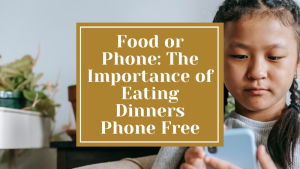 Music, the frequency of sound that moves, inspires, and motivates us, has long been used to moderate and soothe moods and feelings. When I first became a counselor, I discovered this power quite by accident. I was working in a classroom for developmentally delayed students, from ages 3 to 9.
Music, the frequency of sound that moves, inspires, and motivates us, has long been used to moderate and soothe moods and feelings. When I first became a counselor, I discovered this power quite by accident. I was working in a classroom for developmentally delayed students, from ages 3 to 9.
Some had physical disabilities, as well. Like a daycare, if one became agitated and upset it would spread quickly until the all the students were crying plaintively. One Friday, the teacher looked like she was ready to pull her hair out when I got an idea. I ran to my car and pulled a cassette tape out of the dash and ran back in.
It was an instrumental recording of Celtic harp music. We started playing it and within minutes, everyone had stopped crying and started calming down. It was amazing and so impressed all of us that I gave the teacher the tape to use in the future.
This really stuck with me. I am a musician too, having studied classical piano throughout my youth, and then going on to perform as a singer/songwriter, accompanying myself on guitar, piano and Celtic harp. I well know how music therapy can affect feelings and moods! At 14, I was a singer who was starting to gain a reputation for my work.
My voice started getting kind of scratchy so my parents took me to the doctor. He found vocal nodules, and I was given a choice.
I could either “shut up” for 3 months and let them heal, or go under the knife and risk scarring and voice changes. I had a clear voice and did not want to have surgery, so I shut up for 3 months. I mean I could not even whisper.
This became a particularly hard and fascinating time for me in many ways. I learned that if you don’t talk, you often become invisible very quickly. The things people would say or do in front of me, like I wasn’t even there!
It was really a time where I learned much about people to say the least. I went from being popular with my classmates to virtually invisible.
During this time, I threw myself into my piano as that was the only way to express myself musically. I learned to improvise on a theme, and fell in love with the Romantic composers. My favorite songs: Debussy’s “First Arabesque,” and Chopin’s Nocturnes.
Rachmaninoff, Liszt, and modern composers like Dmitri Kabelevsky and Aaron Copland became my new best friends. This music became my own saving grace during this extremely difficult and painful time. I even thought about becoming a concert pianist.
As a counselor and a musician, I have continued my study of music and its many effects on people.
Every week, I work with several teens with varying types of anxiety. While talk therapy is helpful at times, I have discovered that music playing softly is most effective in helping them calm down quickly. Sometimes I only play classical New Age piano songs.
In the past few months, however, I have really improved my work with these folks with a program of music I purchased from Thought Elevators by Eric Taller. These ‘songs’ are produced to sync brainwaves and create specific outcomes.
Because these songs are designed to create certain effects, they sound a little strange at times. But they work! Even while playing softly in the background, or playing simultaneously with an instrumental piano piece, they help my young clients calm themselves more quickly.
These recordings are made with subliminal messages to help achieve certain things. Subliminal messages are laid under the music which is designed to move the listener into delta and theta brain waves. The subconscious will ‘hear’ the messages under the music. These delta and theta waves will make the listener more responsive to the messages and make the messages more effective.
Typically, a young person will be referred to me for zoning out (staring into space with little response). Or they are brought to my office, shaking and crying. First, I ascertain if there is a physical problem causing this or not. Do they have a fever? Are they nauseous? Did something happen at home?
Once we determine this, I ask if something in particular happened to create their feelings. When they have no response or don’t know, I ask if they want to hear some music and do some deep breathing while listening. Rarely do they decline.
As they listen to the music, I have them breathe slowly and rhythmically. I instruct them to count their breaths if necessary. I breathe with them and redirect if they begin to pant or shake. I give them space and only talk if they do.
The music, coupled with the subliminal messages and breathing, usually calms them within minutes. Most of the time, they do not know what triggered their anxiety, but they are still able to move into a calmer state with the assistance of the music, the messages, and the breathing.
The combination of soothing music and subliminal messages, along with deep breathing, has helped me help many young people deal with their anxiety in a positive way. It also teaches them ways to help themselves.
Another interesting use of music to heal anxiety, as well as other issues, is through the Wholetones work of Michael Tyrrell. This original music, which he has created, uses music recorded at different wavelengths to heal.
For example, his work “Transformation,” which is created to positively balance the listener, is recorded at 528H, rather than the typical 440H. He bases his compositions on ancient music from Israel, and some is rumored to have been original compositions of King David. He received the music on manuscripts from a pianist he met while in Jerusalem.
He coupled his musical work with the revolutionary musical therapy studies done by Walter Reed Army Medical Hospital. These studies date back to World War 1, where researchers found that piano and violin helped speed recovery, improve morale, and curb fits of anger common to the returning veterans. In World War II, hospitals kept full-time musicians in their wards to help heal the patients. By 1985, medical researchers were using music with Vietnam vets with PTSD (post-traumatic stress disorder).
They found that the music enabled the vets to focus, control and express their emotions better than before. A 1994 study showed that music worked phenomenally well in helping those with anxiety control their symptoms and heal themselves. Michael Tyrrell has created a healing program that allows the listener to heal at home, on their own time. It can be used alone, or in conjunction with other medical or alternative treatment modalities.
If you are interested in learning more and trying music as a healing helper, there are literally millions of helpful sites online. A quick Google search for music to heal anxiety returned over 17 million hits in less than a second!


